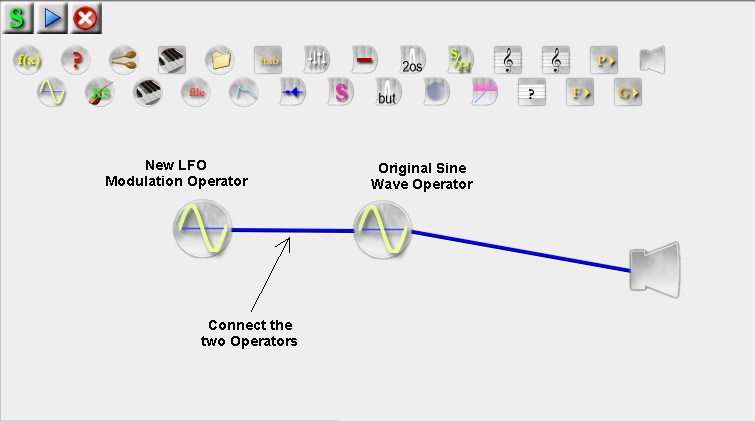|
Computer Music: Musc 216 LFO is an abbreviation for "low frequency oscillator." Modulation refers to the way one signal is changed systematically by another signal. Consequently, LFO modulation refers to the process by which an oscillator using a low frequency (usually below the threshold of human hearing, 1 - 20 Hz) can systematically change the state of another oscillator, for example, its amplitude. Using the simple patch you created in the 1st tutorial (Creating a Simple SYD Patch), the following tutorial will show you how to add another operator which will modulate the amplitude of the original sine wave operator. Systematic modulation of the amplitude by a rate less than about 20 Hz (the optimum rate is 7 Hz) is also referred to as TREMOLO. Tremolo is the effect which is created on a vibraphone and with the voice which such singers as Kenny Rogers. Tremolo is also the effect which is produced when two tones sound togeter with a slight difference in frequency (see beats). Do this:
Make sure your headphones are connected to the audio output of the computer. Also, it is assumed that you have already checked the system audio settings and your computer will produce audio output. Be cautious and place your headphones in front of your ears until you become familiar with this level of the sound. When you are ready to proceed, click the "Play" button located in the bottom left corner of the patch window. You should hear the sine wave play in your headphones and hear a definite modulation of the amplitude corresponding to the 2 Hz frequency of the modulation oscillator. Or, click the link below to hear sound. Back to the SYD Tutorials Index |



